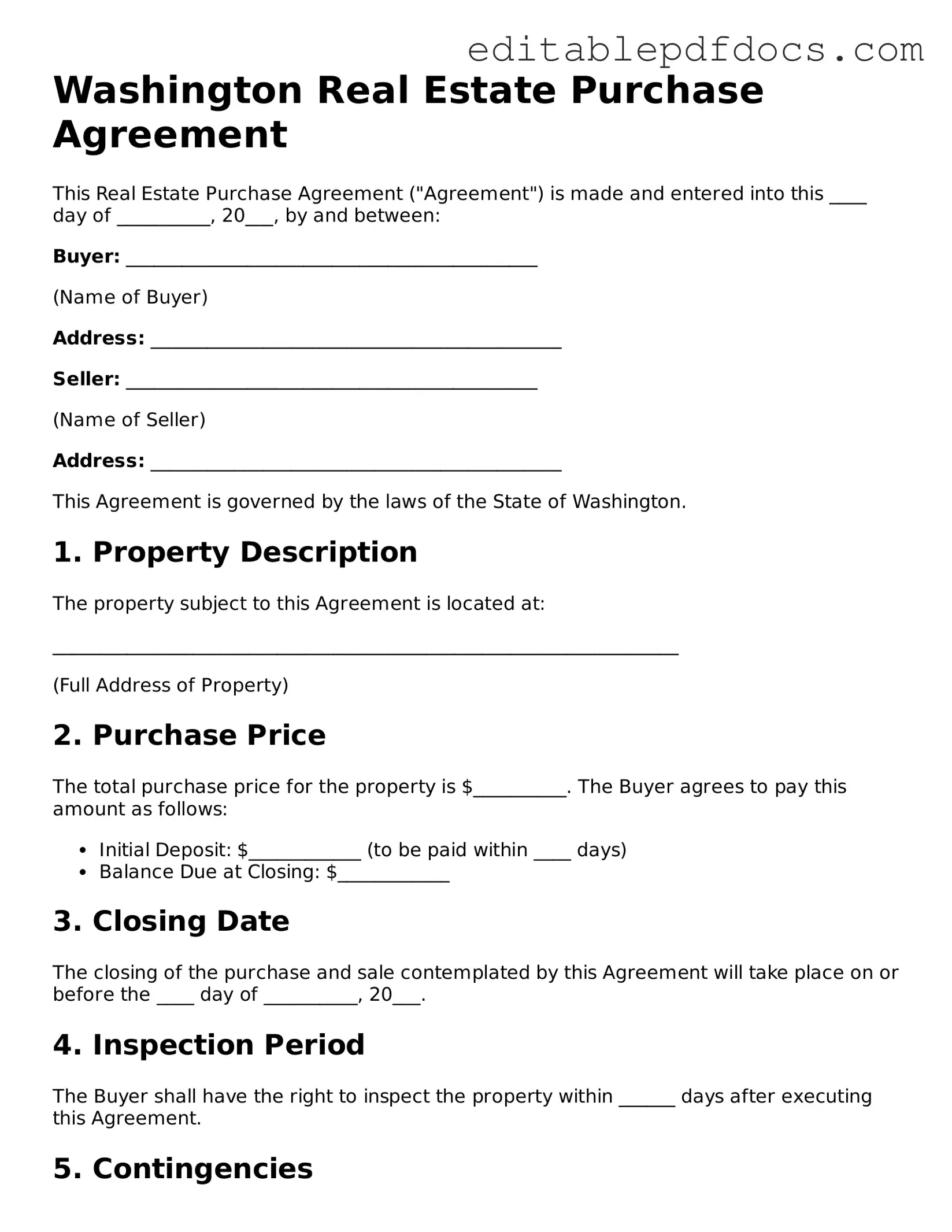When filling out the Washington Real Estate Purchase Agreement form, many individuals overlook critical details that can lead to complications later on. One common mistake is failing to provide accurate property descriptions. Buyers should ensure that the legal description of the property is complete and matches what is listed in public records. Inaccuracies can create confusion and potentially delay the closing process.
Another frequent error involves not specifying the purchase price clearly. Buyers might write the price in words but forget to include the numerical figure, or vice versa. This inconsistency can lead to misunderstandings between the parties involved. It is essential to double-check that both the written and numerical amounts align perfectly.
Many people also neglect to include contingencies in their agreements. Contingencies are conditions that must be met for the sale to proceed, such as securing financing or completing a satisfactory home inspection. Omitting these can leave buyers vulnerable if issues arise after the agreement is signed.
Additionally, some buyers fail to understand the importance of signing and dating the agreement correctly. Each party must sign the document to make it legally binding. A missing signature or date can render the agreement invalid, leading to potential disputes down the line.
Buyers often overlook the section regarding earnest money. This deposit shows the seller that the buyer is serious about the purchase. If the amount is not specified, or if the buyer fails to submit it in a timely manner, it can jeopardize the entire transaction.
Another mistake is not reviewing the closing date thoroughly. Buyers may assume that the date is flexible, but it is crucial to agree on a specific date that works for all parties involved. Miscommunication about the timeline can lead to frustration and delays.
Some individuals forget to include personal property in the agreement. If there are appliances, fixtures, or other items that the buyer expects to remain with the property, they should be explicitly listed. Otherwise, there could be misunderstandings about what is included in the sale.
Buyers might also neglect to consult with their real estate agent or attorney before finalizing the agreement. Having a professional review the document can help catch errors and ensure that all terms are clear and favorable. Seeking expert advice can save time and prevent potential issues.
Lastly, failing to keep a copy of the signed agreement is a common oversight. Once the agreement is signed, both parties should retain a copy for their records. This document serves as a reference for the terms agreed upon and can be crucial if any disputes arise in the future.
